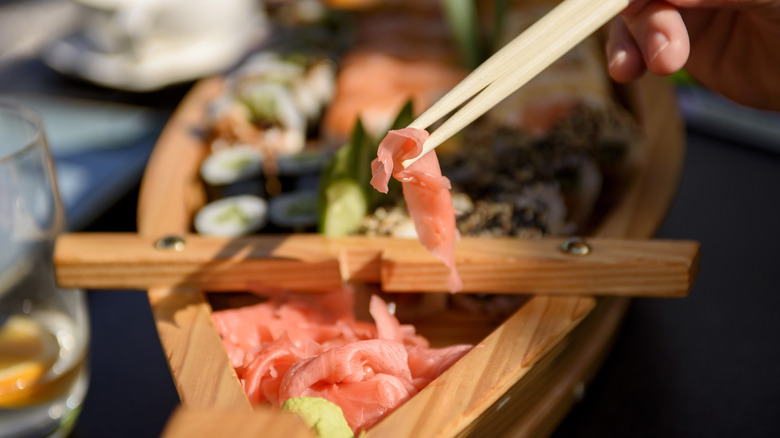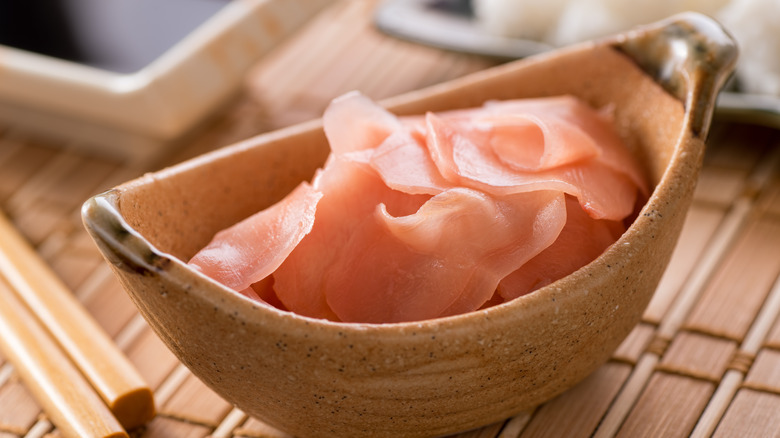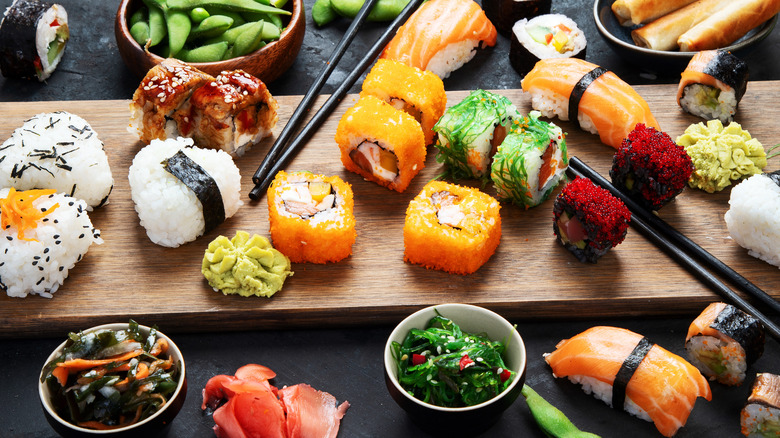Stop Ignoring Ginger When Eating Sushi (It's Actually Useful)
We may receive a commission on purchases made from links.
Picture this: you're sitting at an exquisite Japanese restaurant, and a plate of colorful, fresh sushi arrives. Before you dig in, you wonder what these pink slices of ginger hanging around are for. Perhaps you dive straight in without a second thought or jump online and decide to dig deeper. As you research, you realize there's much more to pickled ginger than meets the eye.
With six different types of sushi to get sucked into, it can be easy to ignore the small pile of pickled ginger that's always served alongside it. Have you ever considered that this ginger may have a higher purpose? Usually bright pink or translucent white, this small accompaniment can magnify your sushi experience. The rich taste of salmon, the delicate flavor of tuna, the smooth cut of octopus, or the savory slice of yellowtail can now be consumed in all its glory. It's time to stop ignoring this little bundle of joy and make the most of it.
What's this ginger all about?
Translated into Japanese, "Gari" is pickled ginger commonly served alongside sushi to cleanse the palate between mouthfuls of different sushi. Think about the versatile combination of flavors in different sushi rolls and how that slither of ginger could amplify the taste. The flavor itself should be sweet and spicy, with a vinegar backdrop. Similar to the way sorbet is used to cleanse the palate of strong flavors, pickled ginger's acidity cuts through any flavor residue.
Pickled ginger is used, particularly between sushi, due to the vinegar it's been soaked in. The acidity of the vinegar removes food residue from the previous mouthful (think about how effective vinegar is as a cleaning product). This works well between portions, especially when changes in flavor can be subtle or overpowering. Sure, the taste of salmon and tuna is relatively mild, so a pickled slice may not be warranted, but a marinated mackerel or earthy piece of eel may need a cleanser afterward. Trust us; you won't regret it.
A gateway to the sushi realm
The process of making gari is usually straightforward, requiring only vinegar, sugar, salt, and root ginger. If you prefer to omit sugar, you can always replace it with honey. If you're wondering why the gari usually has such a pink hue, you'll be pleased to know this isn't food coloring. Ochanomizu University in Tokyo stated that high levels of anthocyanin, which are found in fresh Japanese ginger, react with the vinegar and turn the color of the slices mellow or vibrant pink.
Another secret to eating sushi is not mixing wasabi into your soy sauce. Just as the layers of your sushi unveil its various ingredients, you likewise want your flavors to have distinct levels. Complementing one another yet also standing individually. With this in mind, MasterClass recommends dabbing fish side down into your soy sauce instead of the rice side. This prevents the rice from absorbing more soy sauce, ultimately creating a saltier mouthful. If you wish to expand your knowledge even further, you can delve into the realm of Japanese dining etiquette. With these tips and tricks, you're now ready to relish in a sushi feast, experiencing each and every flavor the way it was made to be enjoyed.


